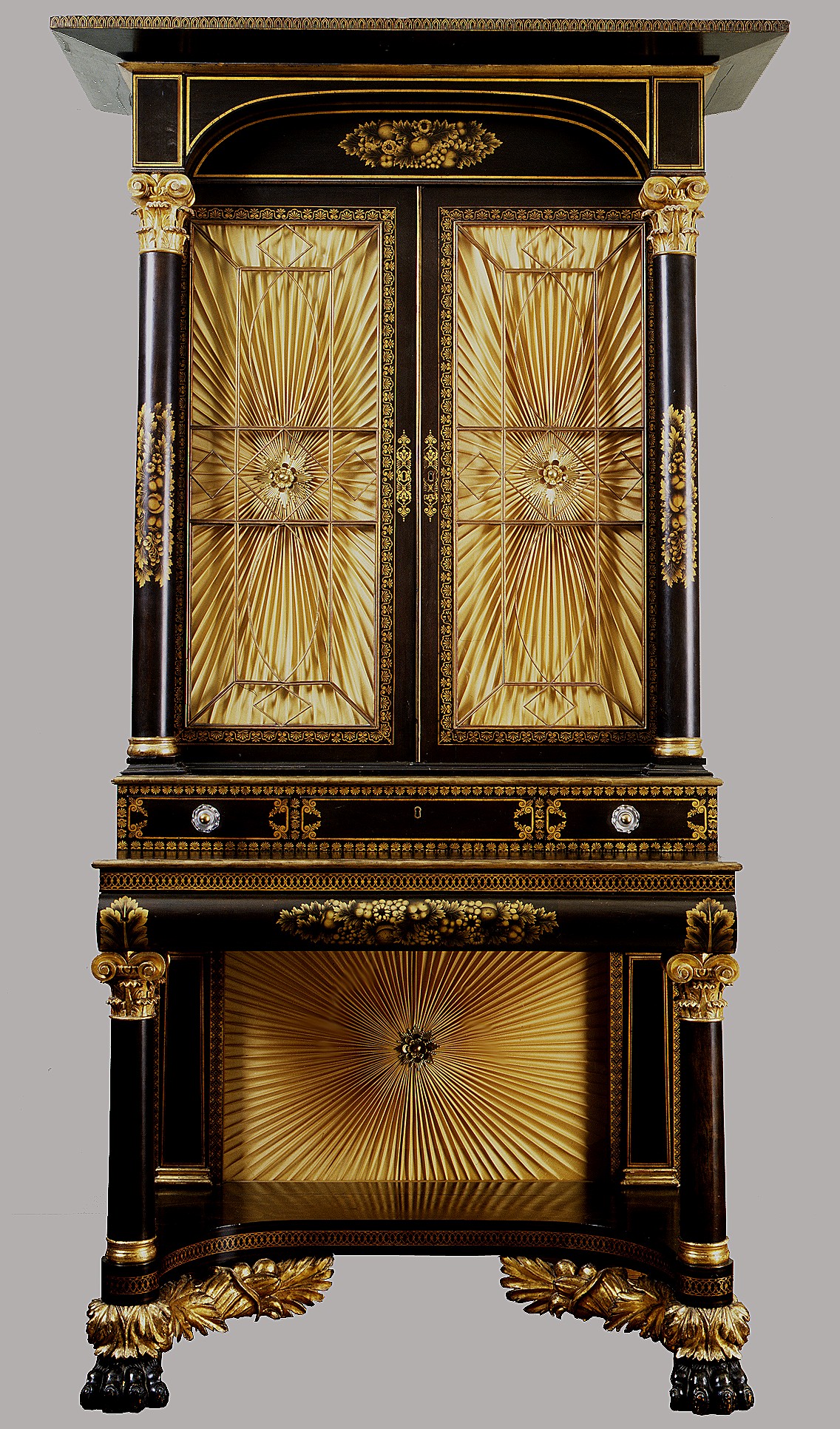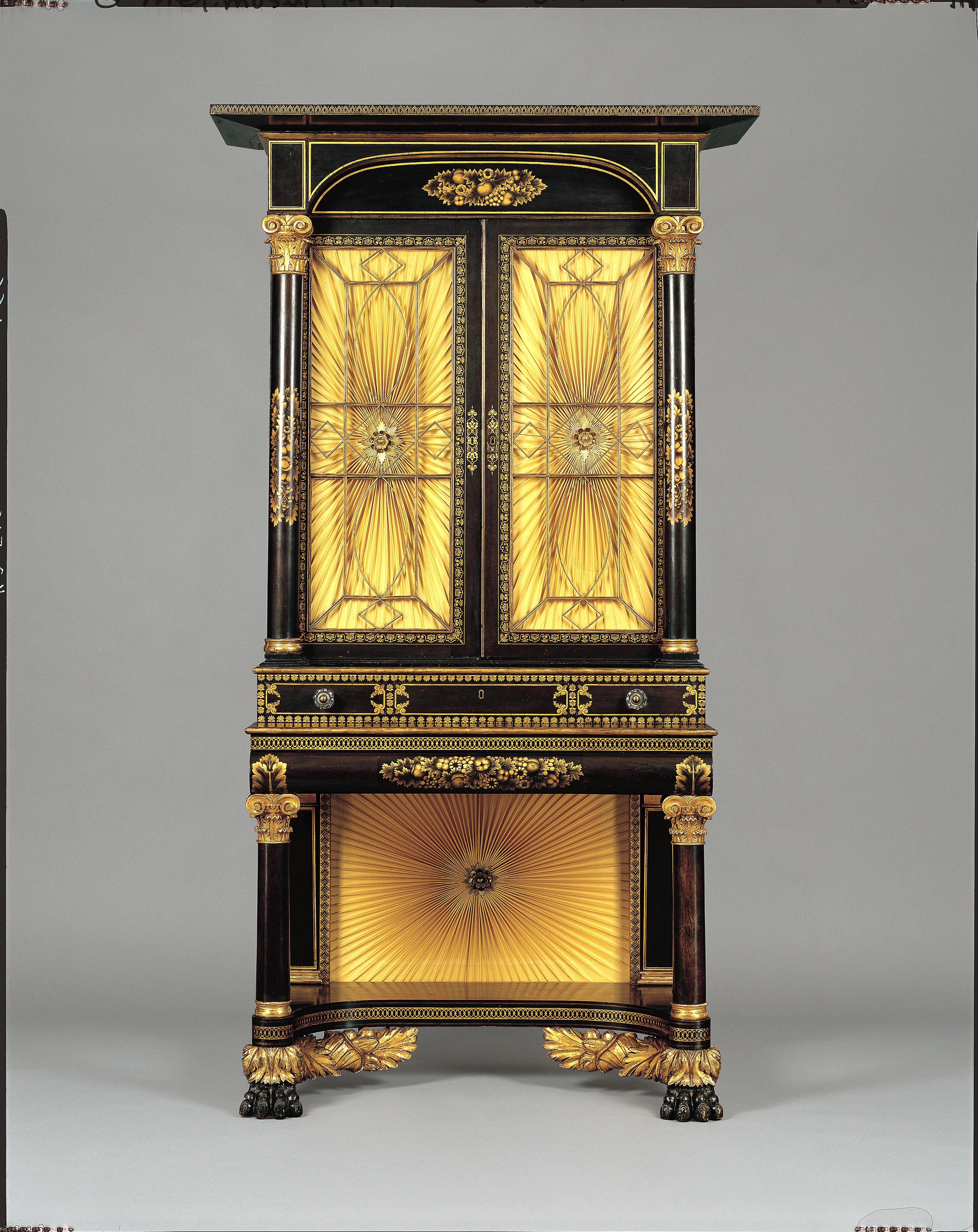Secretary-bookcase
Possibly by Robert Fisher American
Neoclassicism was the dominant style in American furniture for the first four decades of the nineteenth century. In contrast to the earlier Neoclassical designs characterized by light, delicate forms and geometric lines, this secretary, or writing desk, is associated with the later phase of Neoclassicism between 1815 and 1845. While by definition all Neoclassical furniture draws upon the past through the use of motifs and elements from antiquity such as acanthus leaves, animal-paw feet, and palmettes, late Neoclassical furniture is distinguished by its bold forms and often monumental character.
Here the ebonized mahogany, the painted and gilded fretwork in imitation of brass inlay, the naturalistic stenciling of fruits and flowers on the rounded front molding and cornice, the columns with carved and gilded capitals, and the massive paw feet below burnish-gilded cornucopia brackets, all combine to create one of the greatest expressions of American furniture in the late Neoclassical style. Aside from its obvious decorative appeal, this piece served a practical function as a writing desk: the front molding pulls out to reveal a writing surface flanked by compartments for ink, and the drawers and shelves above would have provided storage space for papers, letters, and books. While this secretary had previously been attributed to the New York cabinetmakers Joseph Meeks and Sons, the recent discovery of a signed secretary-bookcase of very similar design by Robert Fishcer (1824-1837) casts doubt upon this certain attribution
Due to rights restrictions, this image cannot be enlarged, viewed at full screen, or downloaded.
This artwork is meant to be viewed from right to left. Scroll left to view more.




